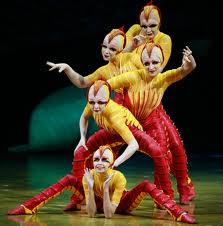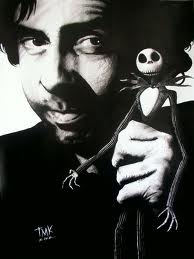Thinking Outside the Frame
An ambulance, racing to the hospital, siren blaring, approaches an intersection. At the same time, from a different direction, a fire truck, racing to a fire, approaches the same intersection. From a third direction, a police car screeches toward the same intersection, responding to a burglary-in-progress call. From a fourth direction, a U.S. Mail truck trundles along to the same intersection. All four vehicles arrive at the same time at the same intersection controlled by a four-way stop sign. Who has the right of way?
The way I just told this story sets a frame around it that may (or may not) guide your thinking. You can look at the story from inside the frame or outside it. If you look inside the frame, you’ll pursue the internal logic of the story. The three emergency vehicles are all racing to save people — from injury, from fire, or from burglary. Which one of those is the worst case? Which one deserves to go first? It’s a tough call.
On the other hand, you could look at the story outside the frame. Instead of pursuing the internal logic, you look at the structure of the story. Rather than getting drawn into the story, you look at it from a distance. One of the first things you’ll notice is that three of the vehicles belong to the same category — emergency vehicles in full crisis mode. The fourth vehicle is different — it’s a mail truck. Could that be a clue? Indeed it is. The “correct” answer to this somewhat apocryphal story is that the mail truck has the right of way. Why? It’s a federal government vehicle and takes precedence over the other, local government vehicles.
In How Doctors Think, Jerome Groopman describes how doctors think inside the frame. A young woman is diagnosed with anorexia and bulimia. Many years later, she’s doing poorly and losing weight steadily. Her medical file is six inches thick. Each time she visits a new doctor, the medical file precedes her. The new doctor reads it, discovers that she’s bulimic and anorexic and treats her accordingly. Finally, a new doctor sets aside her record, pulls out a blank sheet of paper, looks at the woman and says, “Tell me your story.” In telling her own story, the woman gives important clues that leads to a new diagnosis — she’s gluten-intolerant. The new doctor stepped outside the frame of the medical record and gained valuable insights.
According to Franco Moretti, similar frames exist in literature — they’re called books. Traditional literary analysis demands that you read books and study them very closely. Moretti, an Italian literary scholar, calls this close reading — it’s studying literature inside the frame set by the book. Moretti advocates a different approach that he calls distant reading….”understanding literature not by studying particular texts, but by aggregating and analyzing massive amounts of data.” Only by stepping back and reading ourside the frame, can we understand “…the true scope and nature of literature.”
In each of these examples we have a frame. In the first story, I set the frame for you. It’s a riddle and I was trying to trick you. In the second story, the patient’s medical record creates the frame. In the third, the book sets the frame. In each case, we can enter the frame and study the problem closely or we can step back and observe the structure of the problem. It’s often a good idea to step inside the frame — after all, you usually do want your doctor to read your medical file. But it’s also useful to step outside the frame, where you can find clues that you would never find by studying the internal logic of the problem. In fact, I think this approach can help us understand “big” predictions like the cost of healthcare. More on that next Monday.
Innovation: Ideas That Generate Ideas
I’ve spent the past several days in the Minnesota woods at a client’s executive retreat. The client is a software company that has made a number of acquisitions over the past few years. A good portion of the discussion at the retreat focused on how to build a platform that can: 1) integrate the various acquisitions; 2) deliver a common interface; 3) simplify the support load; 4) provide a foundation for developing new functionality more quickly.
The discussion got me thinking about platforms — innovations that generate innovations. I’ve written a lot about innovation over the past year and especially the role of serendipity and mashup thinking. I’ve generally focused, however, on innovations as an end result. In other words, we adopt certain behaviors and modes of thinking and the result is an innovation. We then repeat the process and (hopefully) get another innovation. Creating the innovation essentially ends the process.
Platform thinking, on the other hand, can lead us to innovations that spawn innovations. As Steven Johnson points out, platforms abound in the natural world. Johnson builds an extended metaphor around the coral reef — a platform for unimaginably rich plant and animal life. Once the process gets started (in an otherwise barren sea), the reef builds a virtuous circle that attracts and facilitates multiple life forms. Part of the secret is collaboration. The CO2 that one animal gives off as waste becomes the building block for another animal’s home. Similarly, oxygen is a waste product for some reef denizens but the lifeblood of others.
In the human world, the Internet is probably the best recent example of a platform. The Internet creates both serendipity (we get to meet lots of people) and mashup thinking (we can easily find lots of new ideas to mash together). The Internet also takes care of a lot of the dirty work of information sharing. Just as the coral reef makes it easy for many animals to find a home, the Internet makes it easy for people like me to create websites and share information. We often hear the metaphor of researchers standing on the shoulders of giants. My website is standing on the shoulders of a very rich (and essentially free) technology stack.
Platform thinking is innovation taken to the next step. We think about how to create something that creates something. I’m generally a proponent of free markets, but Johnson makes as strong argument that the most fundamental platforms come from public agencies. Certainly, the Internet did not come from market-driven competition. Rather, it resulted from the collaboration of many specialists from many disciplines in an open environment. That’s pretty much like a coral reef.
So, what’s the next platform? I’m guessing that it’s a mashup of: 1) the human body, 2) secure communications, and 3) Internet sensors. We already have millions of Internet sensors monitoring the environment — everything from air pressure, to ocean salinity, to volcanic pressures. The next frontier could well be sensing human health conditions. We already have wearable condition monitors. For instance, friends of mine run a small company in Denver called Alcohol Monitoring. They provide a wearable device, with secure communications, that alerts probation officers when one of their wards has been drinking. Within a decade, I’d guess that health condition monitors will migrate from outside the body to inside the body. They’ll provide critical data that can help us foresee — and forestall — health crises. They’ll also provide a platform for a huge wave of new ideas, services, and fortunes. Sounds like a coral reef.
Computers Are Useless. They Only Give You Answers.
 I’ve worked with some highly creative people during my career. I’ve also worked with very insightful thinkers, both in business and in academia. Oftentimes, the two skills overlap: creative people are also insightful thinkers and vice-versa. I’ve often wondered if creativity leads to insight or if insight leads to creativity. Lately, I’ve been thinking that there’s a third factor that produces both — the ability to ask useful questions.
I’ve worked with some highly creative people during my career. I’ve also worked with very insightful thinkers, both in business and in academia. Oftentimes, the two skills overlap: creative people are also insightful thinkers and vice-versa. I’ve often wondered if creativity leads to insight or if insight leads to creativity. Lately, I’ve been thinking that there’s a third factor that produces both — the ability to ask useful questions.
Indeed, the title of today’s post is a quote from Pablo Picasso, who seemed both creative and insightful. His point — computers don’t help you ask questions … and questions are much more valuable than answers.
So, how do you ask good questions? Here are some tips from my experience augmented with suggestions by Shane Snow, Gary Lockwood, Penelope Trunk, and Peter Wood.
It’s not about you — too often, we ask long-winded questions designed to show our own knowledge and erudition. The point of asking a question is to gather information and insight. Be brief and don’t lead the witness.
You can contribute to a better answer — even if you ask a great question, you may not get a great answer. The response may wander both in time and logic, looping forward and backward. You can help the respondent by asking brief, clarifying questions. Don’t worry too much about interrupting; your respondent will likely appreciate your help.
Remember your who, what, where, when, how … and sometimes why — these words introduce open-ended questions that often result in more information and deeper insights. Be careful with why. Your respondent may become defensive.
Don’t go too narrow too soon — decision theory has a concept called premature commitment. We see a potential solution and start to pursue it while ignoring equally valid alternatives. It can happen in your questions as well. Start with broad questions to uncover all the alternatives. Then decide which one(s) to pursue.
Dumb questions are often the best — asking an (open-ended) question whose answer may seem obvious often uncovers unexpected insights. Even if you’re well versed in a subject, don’t assume you know the answer from the respondent’s perspective. He or she may have insights you know nothing about.
Be aware of your ambiguities — even simple, seemingly straightforward questions can be ambiguous. Your respondent may answer one question when you intended another. Here’s a simple example: what’s the tallest mountain in the world? There are two “correct” answers: Mt. Everest (if you measure from sea level) or Chimborazo (if you measure from the center of the earth). Which question is your respondent answering?
Think of parallel questions — I’m reading a Kinsey Millhone detective novel (U is for Undertow). One of the important questions Kinsey asks herself is, “why were the teenage boys burying a dog?” It gets her nowhere. But a slight tweak to the question — “Why were the boys burying a dog there?” — provides the insight that solves the mystery. (Reading detective novels is a good way to learn questioning techniques).
Clarify your terms — my sister is an entomologist. She knows that there’s a difference between a bug and an insect. I use the terms more or less interchangeably. If I ask her a question about bugs, she’ll answer it in the technical sense even though I mean it in the colloquial sense. We’re using the same word with two different meanings. It’s a good idea to ask, “When you talk about bugs, what do you mean?”
Think about how you answer questions — when you respond to questions, observe which ones are annoying and which ones lead to interesting insights. Stockpile the interesting ones for your own use.
Silence is golden — when speaking on the radio, I might say “over” to indicate that I’m finished speaking and it’s your turn. In normal conversation, we use body language and tone-of-voice to make the same transfer. Breaking the expected etiquette can lead to interesting insights. You ask a question. The respondent answers and turns it back to you. You remain silent. There’s an awkward pause and, often, the respondent continues the answer … in a less rehearsed and less controlled manner. Interesting tidbits may just spill out.
Don’t be too clever — Peter Wood probably says it best, “A few people have a gift for witty, memorable questions. You probably aren’t one of them. It doesn’t matter. A concise, clear question is an important contribution in its own right”.
Circuses and Oceans
The first time we went to Cirque de Soleil, we took Elliot and a bunch of his 12-year-old buddies. After all, circuses are for kids, right? As it turned out, Suellen and I enjoyed the show just as much — maybe more — than the kids did. I didn’t expect that.
Cirque de Soleil is an excellent example of a mashup innovation. Traditional circuses were for kids. I remember going to Ringling Brothers with my folks. I was dazzled by Uno — the man who could do a handstand on one finger. My parents were troupers but I don’t think they were dazzled. They took me because … well, circuses are for kids.
On the other hand, Broadway musicals are from grownups. They have a bit of a story to follow, they have some conflict, perhaps some mushy stuff, and a resolution. Most of all they have singing. This is where young kids start squirming. I mean, really … how many seven-year-olds want to know that when you’re a Jet, you’re Jet all the way?
The genius of Cirque de Soleil is that it mashes up the traditional circus — get the kids — with Broadway musicals — bring the grownups, too. There’s enough of a story to appeal to Mom and Dad and enough cool (and weird) stuff to appeal to seven-year-olds. It’s family entertainment for modern city dwellers.
While Cirque is a great mashup story, it may be more than that. According to W. Chan Kim and Renee Mauborgne, it’s also a great example of a Blue Ocean Strategy. For Kim and Mauborgne, there are red oceans and blue oceans. A red ocean is full of the blood of competitive strife — it’s red in tooth and claw. The red ocean represents a market of a given size. It’s not going to get any bigger so the only way for one company to grow is to make another company shrink. Strategy is all about defeating the competition rather than winning the customer. As Kim and Mauborgne point out, the market for traditional circuses was very much a red ocean.
A blue ocean, on the other hand, allows you to jump beyond the competition. You create something new and, in doing so, you create a new market where your traditional competitors are irrelevant. The authors offer some great examples of blue ocean strategies and some intriguing and very instructive tips for how to develop one. For Kim and Mauborgne, the genius of Cirque de Soleil is that they have leapt out of the red ocean and into a blue ocean where they rule the waves. Indeed, they’re the only ship in sight.
I’ll report on more blue ocean examples in future posts. At the same time, however, I have a nagging feeling that a blue ocean is not that different from the classic marketing strategy of creating a new category. Once upon a time, for instance, sedans were practical but not much fun to drive. (For my British readers, what Americans call a sedan, you call a saloon). On the other hand, sports cars were fun to drive but not very practical. Then BMW mashed up the two categories and created a sports sedan — practical yet fun to drive. Was the BMW sports sedan a new category or a blue ocean? I’ll report more on that in the future. No matter what you call it, however, mashups are a great way to get there.
A Joke About Your Mind’s Eye
Here’s a cute little joke:
The receptionist at the doctor’s office goes running down the hallway and says, “Doctor, Doctor, there’s an invisible man in the waiting room.” The Doctor considers this information for a moment, pauses, and then says, “Tell him I can’t see him”.
It’s a cute play on a situation we’ve all faced at one time or another. We need to see a doctor but we don’t have an appointment and the doc just has no time to see us. We know how it feels. That’s part of the reason the joke is funny.
Now let’s talk about the movie playing in your head. Whenever we hear or read a story, we create a little movie in our heads to illustrate it. This is one of the reasons I like to read novels — I get to invent the pictures. I “know” what the scene should look like. When I read a line of dialogue, I imagine how the character would “sell” the line. The novel’s descriptions stimulate my internal movie-making machinery. (I often wonder what the interior movies of movie directors look like. Do Tim Burton’s internal movies look like his external movies? Wow.)
We create our internal movies without much thought. They’re good examples of our System 1 at work. The pictures arise based on our experiences and habits. We don’t inspect them for accuracy — that would be a System 2 task. (For more on our two thinking systems, click here). Though we don’t think much about the pictures, we may take action on them. If our pictures are inaccurate, our decisions are likely to be erroneous. Our internal movies could get us in trouble.
Consider the joke … and be honest. In the movie in your head, did you see the receptionist as a woman and the doctor as a man? Now go back and re-read the joke. I was careful not to give any gender clues. If you saw the receptionist as a woman and the doctor as a man (or vice-versa), it’s because of what you believe, not because of what I said. You’re reading into the situation and your interpretation may just be erroneous. Yet again, your System 1 is leading you astray.
What does this have to do with business? I’m convinced that many of our disagreements and misunderstandings in the business world stem from our pictures. Your pictures are different from mine. Diversity in an organization promotes innovation. But it also promotes what we might call “differential picture syndrome”.
So what to do? Simple. Ask people about the pictures in their heads. When you hear the term strategic reorganization, what pictures do you see in your mind’s eye? When you hear team-building exercise, what movie plays in your head? It’s a fairly simple and effective way to understand our conceptual differences and find common definitions for the terms we use. It’s simple. Just go to the movies together.



